The Kabbalah, generally...
these are the Foundation of all things.
 |
The Tree of Life, the depiction of the Sephiroth of the Kabbalah, is the primary symbolic pattern of modern Western occultism. It is greatly used even by organizations not of the Kabbalistic traditions.
Each of the ten emanations within the Sephiroth is called a Sephirah, and together they form what is called the Tree of Life. This Tree is the central image of Kabbalistic meditation; for again, each Sephiroth describes a certain aspect of God, and taken together as the Sephiroth they form the sacred name of God. The Tree also describes the path by which the divine spirit descended into the material world, and the path by which humankind must take to ascend to God:
Each of the ten emanations within the Sephiroth is called a Sephirah, and together they form what is called the Tree of Life. This Tree is the central image of Kabbalistic meditation; for again, each Sephiroth describes a certain aspect of God, and taken together as the Sephiroth they form the sacred name of God. The Tree also describes the path by which the divine spirit descended into the material world, and the path by which humankind must take to ascend to God:
Chokmah
Binah
Daath
Chesed
Geburah
Tiphareth
Netzach
Hod
Yesod
Malkuth
Kabbalah and Its History
The Kabbalah, Hebrew for "that which is received" or "oral tradition," is the Latin transliteration of the Hebrew QBLH, "tradition," which means the message or lore was for centuries taught and passed on by mouth. This will be evident in the narration of its history.
However, in order to avoid confusion and show the current importance of the Kabbalah one must look at its different spellings: Kabbalah, Cabala, and Qabalah. Some scholars and writers have made a distinction between the terms. Generally Kabbalah, or Kabala, signifies the original, or pertaining to, Hebrew version; Cabala signifies the Christian version; and Qabalah is used for the Hermetic version. Such signification has been ignored by many because of the various differences found within. In this article Kabbalah will be used for all.
Although the Kabbalah is founded on the Torah, the Jewish scriptures and other sacred writings, it is no intellectual discipline; and the mystic is not to practice it in solitude, but is to employ it to enlighten humanity. The Kabbalist seeks two things: a union with God while maintaining a social, family, and communal life within the framework of traditional Judaism. Those who have adopted the Kabbalistic teachings have modified these latter aims.
There are various legends concerning the origin of the Kabbalah, most maintain it came from God. Some say God gave it directly to Adam, while others claim God taught it to a select angelic group, sort of a theosophical school in Paradise. Afterwards the fallen angels taught it to Adam, the disobedient child on earth in order to furnish humankind with the means to return to their nobility and felicity. It then passed to Noah, to Abraham and Moses. Moses included the first four books of the Pentateuch, leaving out Deuteronomy, in the Kabbalah before he initiated seventy Elders into it. The Elders initiated others into it. It is thought that David and Solomon were Kabbalistic adapts. Eventually the oral tradition ended and the knowledge was written down.
It might be noted that from Abraham, who immigrated to Egypt and leaked some of the sacred teaching, the Egyptian s learned a portion of the knowledge. It was from Egypt that other Eastern acquired the knowledge and adopted it into their philosophical systems. Surely there is uncertainty of the adequacy of this lore, but it offers a plausible explanation as to the similarity between Eastern beliefs. Moses being privy to all Egyptian wisdom was first initiated into the Kabbalah in the land of his birth and later became more proficient in it during his wondering in the desert wilderness.
As can be seen the Kabbalah is very much akin to Gnosticism. In both, sacred knowledge which God withheld from man was given to him by his adversary; the serpent in the Garden who tempted Eve, and the fallen angels who gave humankind the Kabbalah. In both cases knowledge, gnosis, knowledge of God, is regarded as the most important thing. Not possessing gnosis, not sin, is considered wrong because without such knowledge man cannot know God. Such knowledge is acquired through revelation, not learning. To know God is the purpose of the Kabbalah.
Both Gnosticism and the teachings of the Kabbalah were popular in the countries of the eastern Mediterranean around and after Christ's time. Those holding to either teaching believed they were the "elect" because they were enlightened by possessing the knowledge of the divine; those possessing such knowledge were transformed-to know God is to be God.
The first Kabbalistic text having a known Author was written near the turn of the thirteenth century in Provence. This was a short treatise on the Safer Exira by Rabbi Isaac ben Abraham the Blind. His father Rabbi Abraham of Posquierre wrote the initial critique of the Maimonides' Codes of Law. Rabbi Isaac became the central figure at the Kabbalistic school in Provence as he was quoted for the next generation.
Sefer Yetzirah (Book of Creation) tells that God created the world by the means of thirty-two secret paths of knowledge which are the ten Sephirah and the twenty-two letters in the Hebrew alphabet. It is believed the ten Sephirah forming the Sephiroth were originally thought as referring to numbers but later representing emanations from which the cosmos was formed. This worldview presented is presently found in the current interpretation of the Kabbalah.
The next step in the Kabbalistic development occurred in northern Spain through Rabbi Moses ben Nachman, known as Nachmanides. His main concern was the confrontation of Christianity, and commented exclusively upon the Pentateuch. Others of this school, Girona, wrote commentaries on both the Biblical and Talmudic texts thus joining teachings of the Book Bahir and the Provence Kabbalists into cohesion. In these writings, even though the authors knew the Kabbalistic secrets, they presented Talmudic teachings without revealing the Kabbalistic worldview.
In the second half of the thirteenth century the "ecstatic" or "prophetic" Kabbalah appeared which emphasized a visionary and experiential aspect relying on novel approaches to the Hebrew alphabet and numbers as sources of the divine truth. These conceptions were mainly those of Rabbi Abraham Abulafia, a lonely mystic wanderer, and represent the mystic tendencies among the Kabbalists instead of theosophical and traditional speculations.
Among his disciples was Rabbi Joseph Gikatilla, who later joined Rabbi Moses de Leon the author of the Zohar. Gikatilla wrote a major presentation of the Kabbalistic worldview, The Gates of Great Light, summarizing the Kabbalistic teachings according to the Sephiroth. This about ended the creativity and influence of the medieval Kabbalah before it migrated Italy, Germany, and the east, and became a meaningful, but still esoteric and marginal, component of Jewish religious culture.
An important development in Kabbalah teaching also occurred, in pre-Lurianic Kabbalah there was thought to be an unbroken connection from En Sof and the physical universe. However, Lauria conceived tzimtzum, that is en sof perfomed contraction in order to make room for Creation. In other words, God or his "supreme will" contracted his "light" or "thought" in order to make "empty space" in the physical universe for his creation. Light and thought are in parenthesis because they are view as attributes, each by which creation was performed, by different writers. Some hold tzimtzum never occurred; it is impossible, but used as a metaphor for human comprehension.
This spreading of the Kabbalah was hastened by the Spanish expulsion of the Jews in 1492. Throughout Europe the Kabbalah was read more publicly. Given much credit for its European influence is Isaac Luria Ashkenzia (1534-1572), called Ari, who as a student of the great Kabbalist Moses Cordovero (1522-1570) conceived bold new terminology and complex symbolism. To this he introduced letter combinations as a medium for meditation and prayer.
From this emerged the Hasidic movement making the Kabbalah accessible to the masses. The Hasidim are the only branch of modern Judaism still maintaining mystical practices. The principle figure of this emergence is Israel ben Eleazar (1698-1760), called Baal Shem Tov "Master of the Holy Name," whose teaching centered on devekuth, or cleaving to God, but in a more personal way than before. The Hasidic movement of the late seventeenth and eighteenth centuries stressed a Kabbalistic panentheistic system, a belief that God is in everything, as opposed to pantheism, God is everything. This had good and bad effects. Initially a priest led each unit in the movement, a spiritual one with possibly messianic intentions who became a charismatic preacher, a holy one. He was called a zaddik. Most of the founders of Hasidism were in Madrid were such a system functioned well, but when expanding throughout Europe difficulties arose. A major one was the idea that the only processor to a holy one could be a son of a holy one. Eventually this became absurd, realizing there were other righteous or charitable men who could lead besides a son of a zaddic, so the term took on new meaning.
Composition of the Sephiroth:
The Sephiroth may be viewed as God reaching out to humankind. Each Sephirah with the Sephiroth is an emanation of an attribute of God. Many have described the Sephiroth in various ways, two are prominent: the four worlds and the higher man, or Adam Kadmon
It is claimed the Isaiah 43:7 establishes the foundational proof for the existence of the four worlds: "All that is called by My Name, for my Kavod (Glory) I created it, I formed it, yes I made it." The word asiyah shares the meanings of "making" and "acting."
The structure of the Sephiroth can be from top, the first Sephirah Kether, to bottom, Malkuth, the last Sephirah or vice versa. The direction in which the structure is viewed tells what action is taking place between God and man. When viewed from top to bottom one sees that God is reaching out or letting himself be known to man. Viewed in reverse order, bottom to top, one sees man's attempted ascension to God. Either way, the purpose is the same, the union of God and man, which is the ultimate purpose of the Kabbalah.
Each Sephirah within the Sephiroth is an emanation of an attribute of God, the manifestation of the divine attribute. The first or top Sephirah is Kether. Kether is called the "crown" or "supreme crown." Kether is the essence of God. The naming of describing of the essences of each Sephirah, an attribute of God, is just metaphorical since God has no attributes or in the case of Kether, no essence. God is spiritual; he is nothing while being everything. This is why in Kether God is described as ain, nothingness, and en sof, absolute. God is nothingness but absolute and without end. God is the uncreated entity, nothing exists without him, he is existence itself.
But this nothingness and inclusive existence is not all that compose Kether. Within this nothingness and absolute are every attribute of God that will be manifested in the lower Sephirahs. The non-essence and essence of Kether is Biblically verified: "I AM THAT I AM," a necessary ontological principle (Exodus 3:14); "I am the first and I am the last and beside me there is no God. And who, as I, can proclaim-let him declare it, and set it in order for me…Is there a God beside me? Yea, there is no rock (necessary being beside me)." (Isaiah 44:6-8) "Before me there was no God formed (manifested), neither shall any be after me…I am God." (Ibid. 43:10, 13)
From Kether comes Chokmah, the Second Sephirah. Chokmah signifies divine thought, meditation, and/also art. Like Kether, Chokmah contains contradictions or opposites without any division or friction; since God is ain, nothingness, as well as en sof, absolute, there in him can be no division, an absolute is an absolute, which is why in numerology the number one signifies God. So too, in Chokmah, representing, metaphorically divine thought and meditation, there is no difference between God knowing himself and having knowledge of his being, his essence, because God is knowledge, the essence of knowledge. God, the essence of divine knowledge in Kether, is the emanation of divine knowledge in Chokmah without leaving Kether. This seems impossible to human understanding but it must be true; since God is an absolute, an absolute is by nature indivisible, then one part of him cannot be in Chokmah and not in Kether; that divine part or attribute must equally be in both. This statement holds true for every divine attribute and Sephirah; they are God equally and in the same way. Therefore, all divine attributes are equally present in every Sephirah; it is only metaphorically that each Sephirah manifests a different attribute.
Chokmah is chiefly the manifestation of divine thought, contemplation. A better description of divine thought is stating what it is not; it is not a process, in this way it is unlike human thought. Human thought is a process of collecting, sorting, and forming knowledge which usually accepts, rejects, and/or transforms it into new or different knowledge. Divine thought has no process such as is embodied in human thought; no, one might say it is instantaneous. God thought and it was. This is why according to Kabbalistic teaching Creation occurred at once. This is the mystery of Creation; there was nothing, and there was everything. Within this mystery of Creation is the mystery of man; God thought and man was fashioned. Essentially this all is in the mystery of Chokmah: Chokmah is the One; it knows only, or is the thought of, the One and all in the One. For this reason the perfect archetypes of each and everything reside with Chokmah.
The third Sephirah is Binah. Binah is described as the reflection of Chokmah. Metaphorically speaking, Binah may be described as a mirror, which prior to receiving Chokmah's reflection, was empty and dark like a covered mirror; but when receiving Chokmah's reflection it becomes a supreme plane of luminous light, a light issuing from more than luminous darkness of essence. In this brilliance are the intelligence of Kether and the wisdom of Chokmah, both are reflected in Binah. God has entered the void of his boundless receptivity, his face into his supreme mirror of Binah. This is God revealing himself to himself. By receiving this reflection Binah has a feminine nature, the reception of the intelligence of Kether and the wisdom of Chokmah, and it becomes masculine when passing this knowledge onto the succeeding Sephirah. This statement is true of each Sephirah except for Malkuth; it is feminine when receiving and masculine when passing divine attributes. Since Binah is the first recognized receptive Sephirah she is frequently called the "big mother."
When viewing the Sephiroth as the depiction of human anatomy, the first three Sephirahs, Kether, Chokmah, and Binah, form the head, all concerning knowledge. Kether represents knowledge or knowing, the divine consciousness itself; Chokmah represents that which knows, wisdom, the active or dominant principle of knowledge; and Binah, that which is known, the receptive and reflective aspect of knowledge. This can be simply expressed as the thought, that which thinks, and that which is thought, metaphorically. However, with God there are no three actions; there is one, he produces the thought and knows it simultaneously. Again, divine thinking has no process; it is.
The reflection of Binah now begins the descent, metaphorically speaking, through the succeeding seven Sephirahs. The attributes up to this point are declared to be in what is termed the "great face" of God and inaccessible. Now the attributes enter what is called the "small face" of God and become accessible. The first divine attribute to become accessible is his grace in the Sephirah of Chesed. Grace in Chesed is the first beatitude cosmologically exposed and is sacred happiness given to others according to the need of the other. This means that the Creator God in so far as he realizes, and with boundless kindness, adapts to the limits of every created being, which enables the giving of the form of life to everything that exists, and delivers all things from existential limitations.
There is cooperation between Chesed and Geburah. While Chesed gives life to everything, Geburah the next Sephirah manifesting the strength and rigor of God, gives shape, form, or limitations to everything. God could not give life without limits; such would be injustice because all things would consolidate together; there would be no distinguishing them. In his rigor, not out of anger but in accordance with judgment, God established limits for everything so each received what it is due and requires. Once their limits are fixed by God's rigor all things participate intimately, in their positive reality, in his immanent grace.
It is believe God created the universe to affirm by his grace and rigor all that is in him and deny all that is outside of him. Rigor is first manifested as cosmic darkness, the One (God) without a second; then grace fills all created things and beings with luminous light of divine immanence. Again, divine rigor is not anger but the negation of all that is not God. It is here that evil seems to appear through the appearance in God's contraction ability, to contract to make room for creation. Binah seems to present this evil in its reflection; however, the void created by contraction is of God's making. Therefore, Binah appears to promote good through Chesed and negates evil through Geburah because the end result is totally good.
The next Sephirah Tiphareth mainly manifests God's beauty. God's beauty is derived from his identity which is embodied in Kether. Within this identity lay all of God's infinite possibilities which are displayed in Tiphareth. This Sephirah above all other is the mediatory one of God's heart and compassion, which embraces and fuses everything which is "above" and "below," "on the right" or "on the left" in the world of emanation. In God's beauty all of his aspects are what they are, identified, in all of their relationships and in all of their reciprocity; each Sephirah opens to its fullness and magnificence, penetrating and being penetrated by other Sephirah.
Tiphareth, the beauty of God, is simply a confined description of the entire Sephiroth. All the divine attributes are presence in their true prospective, their limitations and relationships, to each other forming unlimited expressions of the "small face" while revealing the mysteries and lights of the "great face" enclosed within.
The essential principle of divine beauty, Tiphareth, is the identity of the absolute, ain, which excludes all that is not of itself, and the infinite, en sof, which includes all that is real. This is the unity of the more than the luminous darkness of non-being with the dazzling plenitude of pure being, the supreme and most mysterious of unities, which is revealed in the saying (Song of Songs 1:5): "I am black, but comely…" This is the essential principle of divine beauty, the expressing of the nature of God and nothing else.
Accompanying the emanation of divine grace is the manifestation of divine victory, which is the masculine, active and positive power of the Creator, manifested in the Sephirah Netzach. Netzach comes forth from Tiphareth as an infinite flow of pure life, composed of life and bliss, with which it fills everything born with the cosmic multiplication of God, the One.
This illusory multiplication, however, does not solitarily occur. This multiplication can only occur in the accompaniment of Hod. Hod takes on a feminine role of receiving the life which Netzach pours forth; as it pours forth the life it clear away the divine to make room for the Creation which Hod receives, the act of divine contraction. Therefore, both Netzach and Hod must simultaneously come forth from Tiphareth. Hod in its feminine role displays the negative power of the Creator in making room for the new Creation, signifying victory.
The Sephirah Yesod, rightly called the "foundation" is the direct result of the actions of Netzach, the expansive pouring forth of life, and Hod, the emptying of the divine to make room for new Creation. Yesod is the unique act, which simultaneously reveals and reintegrates all this is emanated and manifested; thus, it is also called the kol, the "all." Yesod is the final emanation of all the attributes manifested by the succeeding Sephirahs; and it is the coming together of them again. That is why, for example, the perfect archetypes of everything are presence in Yesod just as they are in Chokmah. But, again, it must be emphasized that these emanations and manifestations are illusory because the entire Sephiroth always existed. The terms emanations and manifestations are metaphorically employed to aid human understanding but in reality they never occurred because the Sephiroth was always there.
The Malkuth, the tenth and last Sephirah in God's descent to man, houses the physical manifestations of all proceeding Sephirahs. Malkuth seated at the very bottom of the Middle Pillar receives everything from "above," and is rightly called the "kingdom" of god. From the right side of the Sephiroth it receives the luminous and intelligible emanations, from the left side the dark and unintelligible ones, and from the central pillar of which Kether is the highest situated the super-intelligible attributes. In this sense Malkuth is identical with the Who, God; it possesses intelligible, super-intelligible, and unintelligible divine aspects.
Even though Malkuth possesses these aspects it is still a passive and receptive principle, the final destination for all of the emanations. Malkuth is purely feminine, having no Sephirah unto which to pass her received emanations. She is called the woman, the wife, or the queen of the divine king. In comparison to Binah, the "big mother," Malkuth is called the "little mother." In other words, all of the innumerable possibilities of the One, God, are conferred on Malkuth where they are actualized. They are actualized through the universal "ether," the quintessence of four subtle or celestial elements and of the four corporeal terrestrial elements; which makes ether the infinite receptivity of the divine intelligence: Binah. In this way, the God "above" reveals himself "below." This is why the lower seven Sephirahs, the "small face" of God are said to reflect in detail the first three Sephirahs, the "greater face" of God.
Daath appears within the Sephiroth but it is not a Sephirah or the eleventh Sephirah as it is frequently mistakenly referred to. Daath includes the first conscious knowledge in Kether and when reflected from Binah becomes ontocosmological intelligence. Simply, Daath is divine intelligence that is inaccessible until it is reflected from Binah and spread throughout the entire Sephiroth. This intelligence presents God and his attributes as well as the perfect archetypes of all things. Daath is God's knowledge infusing everything.
Previously mentioned, the Sephiroth is prominently described in two ways, the four Worlds and the higher man. The four worlds have been described. When describing the higher man, the specific focus is on the relationship of the Sephiroth to man. This entails a threefold description; a description of Adam Kadmon, also called Adam Ilaah, the principle man, who is God in his essence and ontological possibilities; the immanent man, metraton, who is God's entire spiritual manifestation,; and the earthly, finite, man, Adam Harishon, first man, manifested in the forms or spirit, soul and body.
Each Sephirah represents a spiritual and/or physical characteristic of man; Kether, his pure and divine essence or the hidden and super-intelligible brain; Chokmah, his knowledge of God or the right brain; Binah, his ability to discriminate between the real and unreal, the left brain; Chesed, his luminous nature which is always aspiring to the divine, or the right and merciful arm; Geburah, his true judgment of all things, or the left and rigorous arm; Tiphareth, his inner and outer beauty or the heart or trunk symbolizing beautiful and love; Netzach, his spiritual power, or the right thigh or cosmic force; Hod, his natural force, or the left thigh or cosmic negative force; Yesod, his activity, or the generative organ or creative act; and Malkuth, his receptivity, the feet, the female body, or the end-place, substantial recipient of the emanations of the Sephiroth.
Intro to Kabbalah [Accessed January 2009]
Dan, Joseph. Kabbalah: A Very Short Introduction. New York. Oxford University Press. 2006
Elber, Mark. The Everything Kabbalah Book. Avon, MS. Adams Media. 2006
Guiley, Rosemary Ellen. Harper's Encyclopedia of Mystical and Paranormal Experience. New York. HarperCollins. 1991
Schaya, Leo. The Universal Meaning of the Kabbalah. Secaucus, University Books. NJ. 1971

Labels: Book of Splendor, Consuming Fire, Divine Presence, Ein Sof, Elohim, God, Hebrew, Jewish mysticism, Kabbalah, Shekhinah, Ten Sefirot, Torah, Zohar
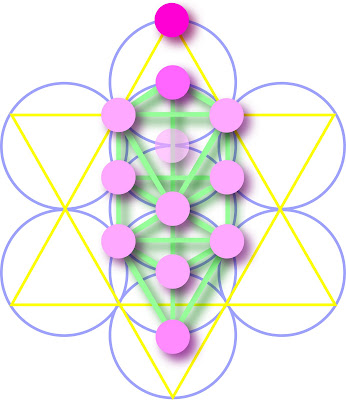
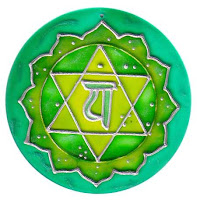

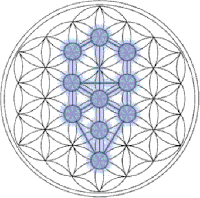

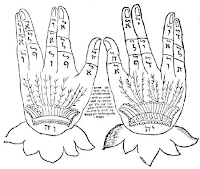

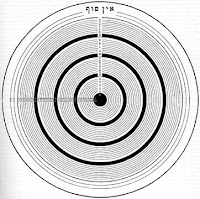
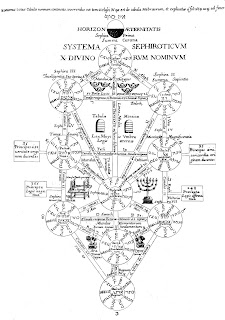
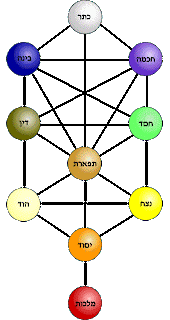
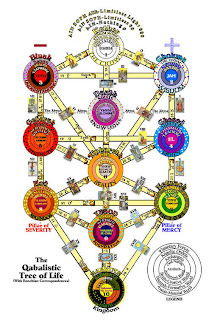


0 Comments:
Post a Comment
Subscribe to Post Comments [Atom]
<< Home